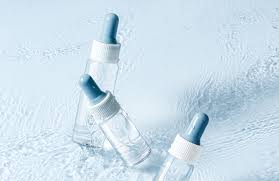
The Power of Azelaic Acid in Skincare: Benefits, Uses, and How to Get It Right
Azelaic acid has quietly become a hero ingredient in the skincare world. You may have heard of it in acne treatments, skin lightening creams, or rosacea gels—but what is it, and how does it work?
In this guide, we’ll break down everything you need to know about azelaic acid, including its benefits, how to use it safely, and how it compares to other popular actives like retinol.
What Is Azelaic Acid?
Azelaic acid is a naturally occurring acid derived from grains such as wheat, barley, and rye. In skincare, it’s classified as a dicarboxylic acid, a group known for their skin-refining properties.
Unlike alpha or beta hydroxy acids, azelaic acid is gentler. It exfoliates, fades dark spots, calms inflammation, and even fights acne—all in one formula.
You’ll often find it in serums, gels, creams, and prescription medications. Dermatologists recommend it for acne, hyperpigmentation, rosacea, and signs of aging.
INCI and Alternate Names for Azelaic Acid
On ingredient lists, azelaic acid may appear under several names, including:
1,7-Dicarboxyheptane, Lepargylic Acid, Nonanedioic Acid, Anchoic Acid, 1,7-Heptanedicarboxylic Acid
Despite the technical names, all refer to the same skin-benefiting compound.
How Azelaic Acid Works
Azelaic acid has a low pH, which helps exfoliate the skin and prevent clogged pores. It targets the root of many skin concerns by:
Reducing inflammation
Killing acne-causing bacteria
Inhibiting melanin production
Smoothing rough skin texture
It acts gently but effectively, making it ideal for those with sensitive or reactive skin.
Benefits of Azelaic Acid
Azelaic acid offers a wide variety of benefits. Here’s why it’s a favorite among dermatologists and skincare enthusiasts alike:
1. Fights Acne
Azelaic acid kills acne-causing bacteria without triggering antibiotic resistance. It also reduces swelling and helps pores stay clear, preventing future breakouts.
2. Lightens Dark Spots
Azelaic acid helps fade hyperpigmentation by inhibiting tyrosinase, the enzyme that controls melanin production. It also damages overactive pigment-producing cells (melanocytes).
3. Reduces Redness
If you struggle with rosacea or general facial redness, azelaic acid can calm your skin. Its anti-inflammatory action soothes the skin and reduces flare-ups.
4. Improves Skin Texture
As a mild exfoliant, azelaic acid helps remove dead skin cells and encourages smoother, more even skin. Over time, this can reduce the appearance of fine lines and scars.
5. Has Antioxidant Properties
Azelaic acid helps protect your skin from free radicals—unstable molecules that contribute to premature aging and skin damage.
Who Should Use Azelaic Acid?
Azelaic acid is generally safe for all skin types, including sensitive and acne-prone skin. It’s also a good choice for those with darker skin tones who are treating hyperpigmentation.
Unlike many acids, it doesn’t increase sun sensitivity, though sunscreen is still recommended daily. It’s a great option for people who want noticeable results without harsh ingredients.
Is Azelaic Acid Safe?
Yes, azelaic acid is considered very safe. It has a low risk of allergy and irritation. Most people tolerate it well, even when used regularly.
However, it may cause a mild stinging or burning sensation during the first few uses—especially if your skin barrier is compromised or you’re using too many exfoliants.
Avoid using it on broken, peeling, or irritated skin to reduce discomfort.
Azelaic Acid in Pregnancy and Breastfeeding
Azelaic acid is classified as FDA Pregnancy Category B. This means animal studies show no harm, but human studies are limited.
It’s generally considered safe for use during pregnancy, especially when applied to small areas like the face. Avoid use on large areas or during the first trimester as a precaution.
Infants under two should not be exposed to products containing azelaic acid due to their sensitive skin and higher absorption risk.
Forms of Azelaic Acid: Which One Is Right for You?
1. Gels
Lightweight and water-based, azelaic acid gels absorb quickly. They’re ideal for acne-prone or oily skin types, and they don’t clog pores.
2. Creams
These are thicker and more hydrating. Best for normal to dry skin, creams provide both active treatment and moisture in one.
3. Serums
Azelaic acid serums contain higher concentrations and are designed for targeted treatment. These are often more expensive but deliver powerful results faster.
Azelaic Acid vs. Retinol
Both azelaic acid and retinol are known for their anti-aging and acne-fighting abilities, but they work differently:
Feature Azelaic Acid Retinol
Exfoliates Yes Yes
Collagen Boost Mild Strong
Reduces Pigmentation Yes Yes
Irritation Risk Low Moderate to High
Sun Sensitivity No Yes
Antioxidant Yes No
Can You Use Them Together?
Yes, but proceed with caution. Both ingredients exfoliate, so using them together may over-exfoliate your skin. If you’re new to either, introduce them slowly and not on the same day.
Apply azelaic acid in the morning, followed by moisturizer and sunscreen. Use retinol at night, unless advised otherwise by a dermatologist.
Best Oils to Pair with Azelaic Acid
Azelaic acid does not hydrate the skin. If you have dry or dehydrated skin, consider layering it with nourishing oils like:
Avocado oil, Rosehip seed oil, Sunflower oil, Grapeseed oil, Olive oil
These oils won’t clog pores and help reinforce your skin barrier while azelaic acid works on inflammation and pigmentation.
Conditions Azelaic Acid Can Help Treat
1. Acne
Thanks to its antimicrobial and anti-inflammatory properties, azelaic acid is perfect for treating both inflammatory and non-inflammatory acne.
It kills P. acnes bacteria, clears pores, and prevents future breakouts without increasing oiliness.
2. Hyperpigmentation
Azelaic acid treats dark spots, melasma, and post-inflammatory hyperpigmentation (PIH). It works by:
Blocking melanin production at the enzymatic level
Damaging excess melanin-producing cells without harming healthy skin
3. Rosacea
One of the most well-researched treatments for rosacea, azelaic acid reduces redness, calms bumps, and supports long-term skin healing.
4. Fine Lines and Wrinkles
While not as powerful as retinol in boosting collagen, azelaic acid contributes to smoother skin by gently exfoliating and calming inflammation, both of which help delay signs of aging.
Is Azelaic Acid an Exfoliant?
Yes. Azelaic acid is a mild chemical exfoliant. It dissolves the “glue” between skin cells to help them shed evenly, which improves skin texture and tone over time.
It’s often gentler than glycolic acid or salicylic acid, making it perfect for sensitive skin or those who can’t tolerate stronger exfoliators.
How to Use Azelaic Acid in Your Skincare Routine
Here’s a simple way to include azelaic acid in your daily routine:
Morning, Cleanser, Azelaic acid, Moisturizer, Sunscreen, Evening, Cleanser, Retinol (if using), Moisturizer
(Skip azelaic acid at night if using retinol to avoid irritation.)
Use 2–4 times per week at first, then gradually increase based on your skin’s response.
Final Thoughts: Is Azelaic Acid Worth It?
Absolutely. Azelaic acid is a versatile, effective, and gentle skincare ingredient that tackles acne, pigmentation, and inflammation without the drama of harsher treatments.
It’s perfect for beginners, those with sensitive skin, or anyone looking to balance their routine with an ingredient that does a little bit of everything.
Whether you’re dealing with breakouts, dullness, redness, or uneven skin tone, azelaic acid might be the multitasker your routine has been missing.


